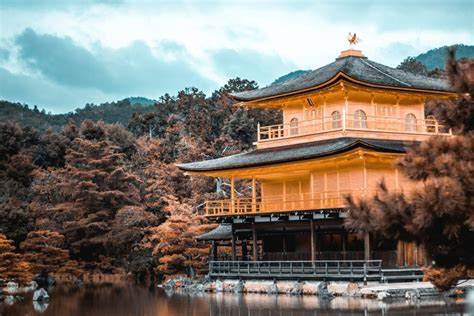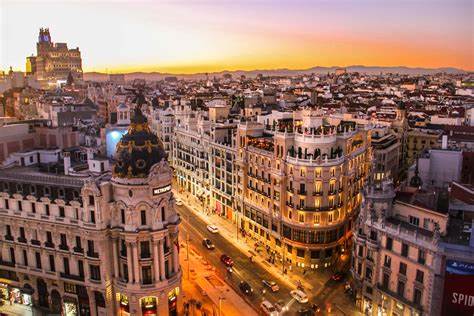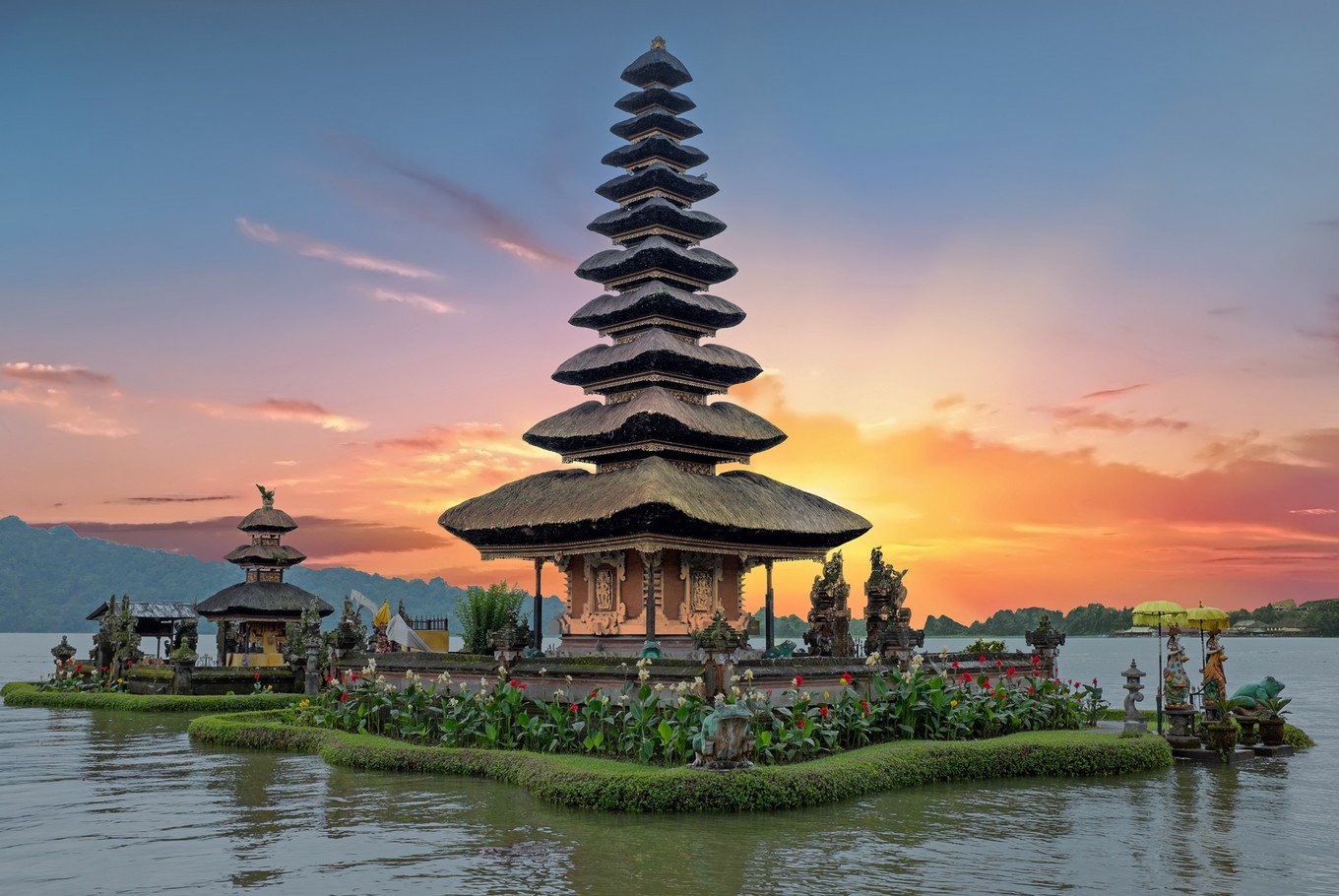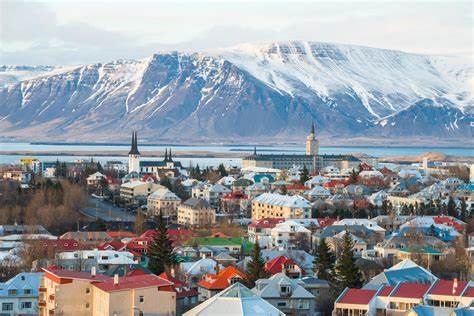Nestled in the heart of Japan’s Kansai region, Kyoto is a city that embodies the soul of Japan. Steeped in history, culture, and natural beauty, Kyoto was once the capital of Japan for over a thousand years, and its centuries-old temples, shrines, and gardens reflect the nation’s deep respect for tradition and nature. A visit to Kyoto is like stepping back in time, offering an immersive experience in Japan’s classical heritage, all set against a backdrop of scenic landscapes and breathtaking temples.
Start your journey with a visit to Kinkaku-ji (Golden Pavilion), one of Kyoto’s most iconic landmarks. This Zen Buddhist temple, covered in gold leaf, is surrounded by a tranquil pond, creating a mesmerizing reflection of the golden building in the water. The surrounding gardens are equally beautiful, with carefully manicured trees, ponds, and stepping stones. It’s a serene spot for reflection and a perfect introduction to Kyoto’s blend of nature and spirituality.
Nearby, the Ryoan-ji Temple is another must-see for those interested in Zen Buddhism. The temple is home to one of Japan’s most famous rock gardens, a minimalist design that invites contemplation and introspection. The garden consists of fifteen stones placed on white gravel, with only fourteen visible at any one time, prompting visitors to ponder the meaning of the arrangement. The temple itself is surrounded by beautiful gardens, perfect for a peaceful stroll.
For a more immersive cultural experience, visit the Fushimi Inari Shrine, one of Kyoto’s most important Shinto shrines. This iconic site is famous for its thousands of vermilion torii gates that lead you up the slopes of Mount Inari. Walking through the tunnel-like pathway of gates is a mesmerizing experience, especially during early morning or late afternoon when the crowds are thinner. At the top of the mountain, you’ll find smaller shrines and panoramic views of Kyoto. The shrine is dedicated to Inari, the god of rice and agriculture, and you’ll often see fox statues, believed to be the messengers of Inari.
Kyoto is also home to the peaceful and historic Gion District, where you can still experience traditional Japanese tea houses, narrow alleyways, and wooden machiya houses. Gion is famous for its geisha culture, and if you’re lucky, you might catch a glimpse of a maiko (apprentice geisha) or a geiko (fully qualified geisha) as they make their way to their appointments. The area is especially charming at dusk when the lanterns light up, creating a warm and inviting atmosphere. While you’re in the area, don’t miss visiting Yasaka Shrine, a beautiful Shinto shrine with impressive gates and lovely gardens.
One of Kyoto’s most picturesque locations is Arashiyama, a district located on the western edge of the city. Here, you’ll find the Arashiyama Bamboo Grove, an enchanting forest of towering bamboo stalks that sway gently in the wind, creating a serene and almost otherworldly atmosphere. The grove is part of a larger area filled with temples, gardens, and hiking trails, making it a perfect place to spend the day exploring. Just a short walk from the grove is the Tenryu-ji Temple, a UNESCO World Heritage Site known for its beautiful Zen gardens and tranquil pond.
For those interested in Kyoto’s rich history, the Nijo Castle is a fascinating site. This former residence of the Tokugawa shoguns is famous for its nightingale floors, which chirp when walked upon as a security measure against intruders. The castle is a stunning example of Japanese feudal architecture, with beautifully decorated rooms, intricate wooden carvings, and lovely gardens. Take your time to explore the rooms and appreciate the delicate artistry of the interiors.
If you’re looking for a taste of Kyoto’s more traditional side, the Kiyomizu-dera Temple is an absolute must. Known for its vast wooden stage that juts out over the hillside, the temple offers spectacular views of the city, particularly during the spring cherry blossom season and the autumn foliage season. The surrounding Otawa Waterfall is believed to have healing properties, and visitors can drink from the three streams, each said to grant a different wish: longevity, success in love, and academic achievement.
Kyoto is also home to a variety of beautiful Japanese gardens, each offering a unique aesthetic and tranquil atmosphere. The Ninna-ji Temple and Shosei-en Garden are both peaceful spots that invite quiet contemplation, with carefully arranged rocks, ponds, and pruned trees creating a sense of harmony between nature and man-made design.
When it comes to food, Kyoto offers some of the finest traditional Japanese cuisine. Kaiseki, a multi-course meal featuring seasonal ingredients, is a specialty in the city, and you can enjoy it at one of Kyoto’s many elegant ryokan (traditional inns) or high-end restaurants. For a more casual experience, try yudofu (tofu hot pot), a Kyoto specialty, at one of the local Buddhist temples or restaurants. Matcha (green tea) is another highlight, as Kyoto is home to some of Japan’s best matcha plantations. You can enjoy matcha-flavored sweets, ice cream, and even lattes at cafes around the city.
If you want to take home a taste of Kyoto, the Nishiki Market, also known as “Kyoto’s Kitchen,” is a bustling shopping street where you can sample a wide variety of local foods, from pickled vegetables and fresh seafood to sweets and specialty teas. The market is also a great place to pick up souvenirs like kimonos, handcrafted pottery, and furoshiki (traditional wrapping cloths).
Kyoto is a city that thrives on its deep connection to nature, art, and tradition, and its peaceful atmosphere invites visitors to slow down and immerse themselves in the beauty of the environment. Whether you’re admiring ancient temples, strolling through bamboo forests, or savoring traditional Kyoto cuisine, the city offers a profound and unforgettable experience.
For a truly unique experience, visit Kyoto in the spring when the cherry blossoms are in full bloom. The city’s temples, gardens, and parks transform into a sea of pink and white flowers, creating a magical atmosphere that feels like something out of a dream. Likewise, in the fall, Kyoto’s landscape is adorned with vibrant red, orange, and gold foliage, making it a photographer’s paradise.
Kyoto is more than just a city; it’s a journey into the heart of Japan’s cultural and natural beauty, offering a perfect balance of history, serenity, and timeless charm.
This guide introduces Kyoto’s rich cultural heritage, peaceful natural settings, and unique culinary experiences, showcasing the city’s enduring beauty and tranquil ambiance.






